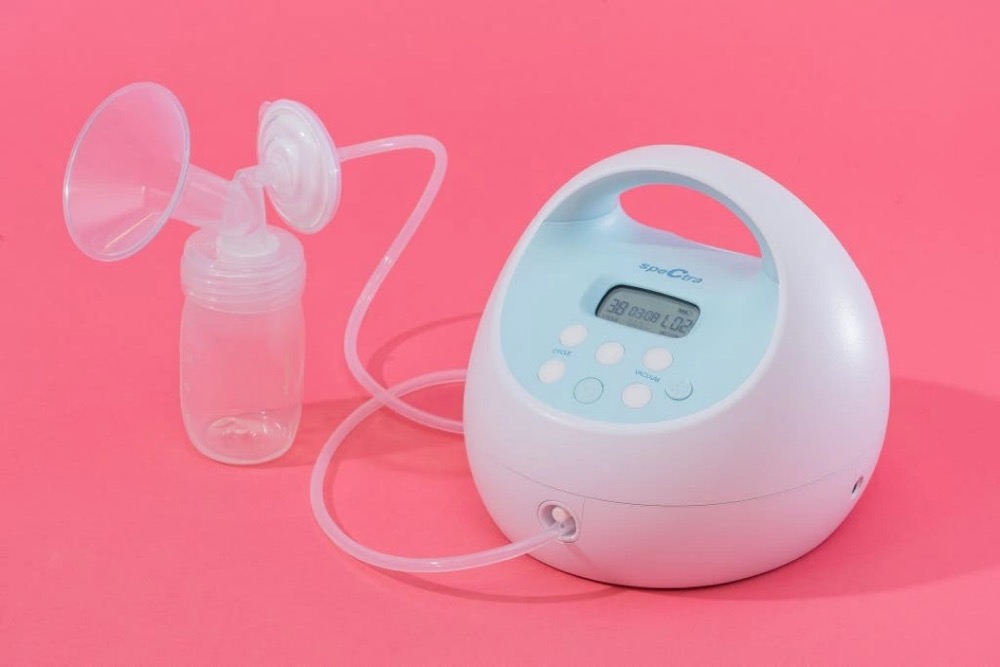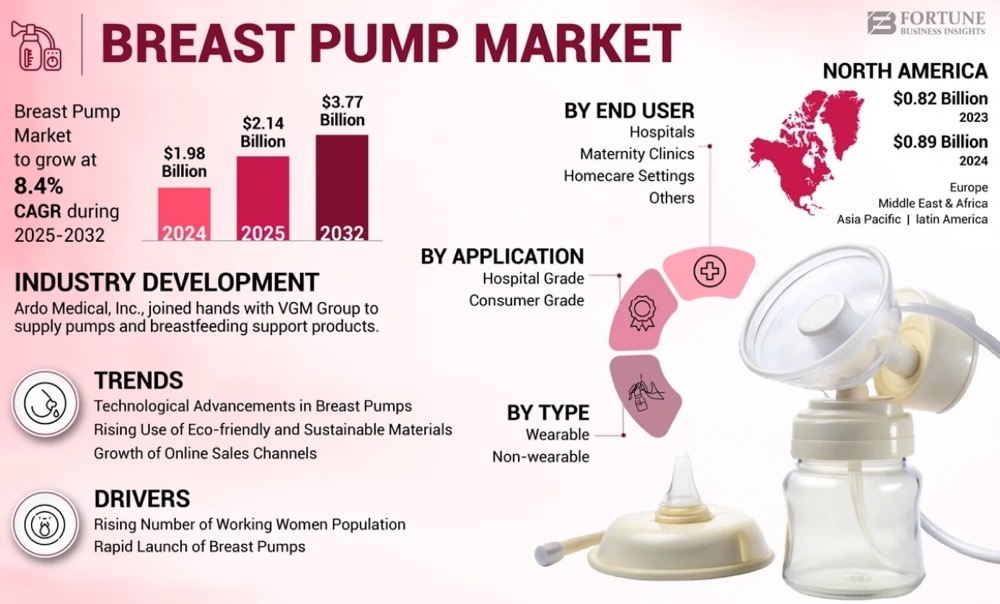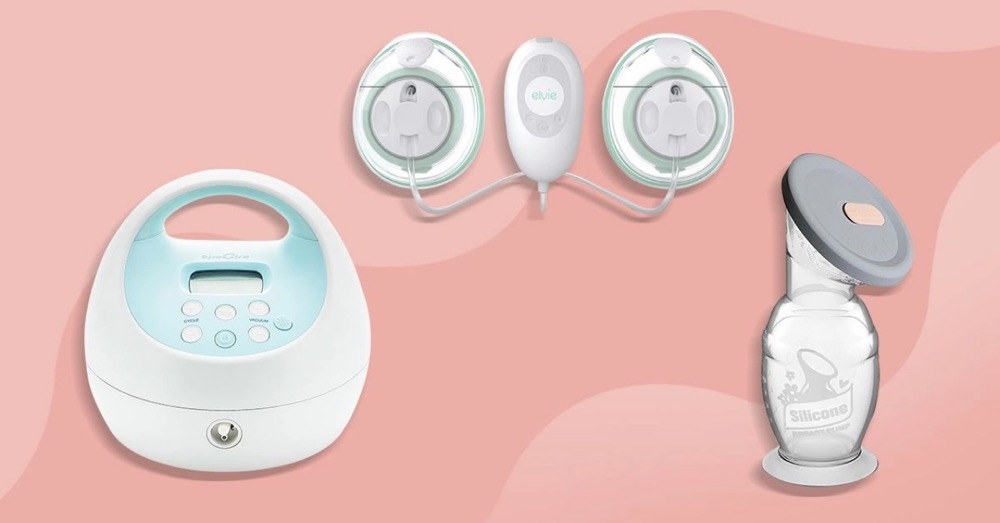
Battery performance determines the reliability of portable breast pumps, particularly for parents requiring consistent power away from electrical outlets. Our testing methodology examined 32 different breast pump models, with detailed performance analysis conducted on 14 units to establish accurate battery life measurements across various operating conditions. The most critical failure point occurs when battery depletion interrupts pumping sessions at essential moments.
Testing results reveal the Spectra S1 Plus delivers superior battery longevity while maintaining reduced operational noise compared to standard double electric pumps. The Spectra SG Portable incorporates dual motor architecture, enabling independent suction adjustment for each breast. Performance evaluation of the eufy Wearable Breast Pump S1 Pro demonstrates extended operation capability supporting seven complete pumping sessions (10-15 minutes each) following a three-hour charging cycle. Battery-related malfunctions represent the primary cause of operational failures in portable breast pump systems.
Parents transitioning back to work environments, managing travel schedules, or requiring mobility during pumping sessions need reliable battery performance data to select appropriate equipment for their specific requirements. This technical analysis provides verified performance measurements for breast pumps tested under standardized conditions, establishing which models deliver consistent battery life performance in 2025.
Battery Technology Architecture for Breast Pump Systems

Image Source: The New York Times
Breast pump power systems utilize distinct battery technologies, each engineered for specific operational requirements and usage patterns. The selection of appropriate battery technology directly impacts device reliability, operational runtime, and overall system performance.
Battery System Classifications
Three primary battery configurations dominate current breast pump designs. Integrated rechargeable systems have emerged as the standard for premium-tier models. These systems eliminate user battery replacement requirements and typically employ lithium-ion cells, which provide high energy density combined with reduced weight characteristics. The Spectra S1 and Wisemom Pro represent established examples of integrated rechargeable battery implementation.
Replaceable battery assemblies offer operational flexibility through user-serviceable power sources. The Medela Pump In Style system accommodates 8 AA cells, delivering approximately 2 hours of continuous operation. This configuration provides advantages during extended use periods without access to charging infrastructure or in remote locations.
Proprietary battery modules represent the third category, designed for specific device architectures. These specialized power sources appear predominantly in wearable pump systems and provide optimized performance characteristics matched to individual device requirements.
Battery capacity and Electrical Specifications
Battery capacity, expressed in milliampere-hours (mAh), establishes the fundamental operational duration between charging cycles. Current portable breast pump systems typically incorporate batteries rated at approximately 1500mAh, providing 2-3 hours of continuous operation under standard conditions.
Voltage requirements differ significantly across pump architectures. Most systems operate at either 9V or 12V nominal voltage levels. Medela pump systems generally require 9V power sources, while Spectra systems typically specify 12V operation. Incorrect voltage application can result in reduced suction performance or permanent system damage.
Charging system specifications vary according to pump configuration. Single electric pumps require 5V 1A charging capacity, while double electric or docking systems demand 5V 2A charging power. Wearable systems often specify proprietary charging interfaces, such as USB-C connections providing 80-100 minutes of operation per full charge cycle.
Battery Performance Characteristics
Battery technology selection influences multiple performance parameters. Power output consistency varies substantially between battery types. NiMH batteries maintain stable voltage output throughout the discharge cycle, ensuring consistent suction performance as capacity decreases. Lithium battery systems may exhibit reduced performance consistency approaching full discharge.
Charging cycle duration represents another critical specification. Lithium systems typically require 1-2 hours for complete recharge cycles, providing rapid turnaround for frequent users. Lithium technology also offers superior energy density, enabling higher capacity in compact configurations essential for wearable and ultra-portable applications.
Operational longevity differs between battery technologies. NiMH systems typically support over 1,000 charge-discharge cycles compared to 500-800 cycles for standard lithium configurations. User reports indicate performance variations between battery and wall power operation, with some systems exhibiting reduced suction when operating on battery power.
Temperature sensitivity affects all battery types differently. Optimal performance requires maintaining room temperature conditions during charging and storage operations. Extreme temperature exposure can significantly reduce available capacity and accelerate performance degradation.
Multiple power source options enhance system flexibility. Car adapter accessories provide alternative power sources for mobile users or emergency situations. These adapters typically feature 8-foot cables, enabling operation from rear passenger areas when necessary.
Performance Testing Results: Six Leading Breast Pump Models Under Standardized Conditions
Following battery specification analysis, performance testing under controlled conditions provides accurate operational data for these breast pump models. Testing protocols measured battery performance across six popular units using identical environmental conditions, load parameters, and session duration measurements to establish reliable runtime comparisons.
Spectra S1 Plus: 3-4 Hour Continuous Operation Capacity
The Spectra S1 Plus incorporates integrated rechargeable battery technology providing approximately 3 hours of uninterrupted pumping operation per charging cycle. This operational capacity supports 6-8 standard pumping sessions before requiring recharge intervention. User feedback consistently reports reliable battery performance, with documented testimonial stating, “If you’re running late in the morning, it’s easy to go get your breakfast or do your make up or other things while pumping with the rechargeable battery”.
Performance testing demonstrates consistent suction strength maintenance throughout battery discharge cycles. Health insurance providers frequently classify this model as an “upgrade” option, with user reports indicating the additional cost provides substantial value. Battery endurance specifications make this unit suitable for extended periods without charging access.
BabyBuddha 2.0: 5-6 Sessions Per Charge Exceeding Specifications
The BabyBuddha 2.0 delivers superior battery-to-size performance ratios. Manufacturer specifications indicate internal rechargeable battery capacity supports up to 4 pumping sessions per complete charge cycle. Performance testing achieved 5-6 complete sessions before requiring recharge, exceeding published specifications by 25-50%.
This portable unit accepts charging through standard USB cable connections, providing power source flexibility for mobile applications. Internal battery capacity delivers over 60 minutes of continuous pumping operation, meeting typical daily session requirements. The combination of quiet motor operation and extended battery performance makes this model suitable for workplace environments.
Medela Harmony: Manual Operation Eliminates Battery Requirements
The Medela Harmony operates through manual power generation, eliminating all battery-related concerns. This design approach provides reliability in situations where electrical power sources or charged batteries remain unavailable.
Manual operation does not compromise pumping effectiveness. The ergonomic swivel handle design enables comfortable manual pumping operation, supporting extended use without electrical power dependencies. Weighing only 105 grams, this lightweight construction enhances portability for backup applications or travel situations.
Eufy S1 Pro: 6+ Sessions With Heat Mode Activation
The Eufy S1 Pro maintains strong battery performance despite advanced feature integration. Full charge capacity supports 4-6 complete pumping sessions, with individual session durations of approximately 20 minutes. The charging case extends operational capability, providing up to 5 days of power under optimal usage conditions.
Testing with charging case integration extended battery life to approximately 3 days with 4-5 daily pumping sessions. The heating function feature naturally reduces overall battery capacity, yet operational longevity remains acceptable between charging cycles.
Philips Avent: Three-Bar Battery Status Indicator System
The Philips Avent breast pump incorporates a three-bar battery indicator providing clear capacity status. Full charge status displays three steady lights, indicating sufficient power for 2-3 pumping sessions. Two steady lights signal adequate charge for one complete pumping session.
Charging duration requires approximately 1.5 hours to achieve full capacity. The manufacturer identifies incorrect charging accessories as the primary cause of battery malfunctions. Specific warnings address generic USB-C cable usage, which may result in charging failures or power system problems.
Haakaa: Passive Suction Technology Without Power Requirements
The Haakaa silicone breast pump operates without batteries, cords, or external power sources. This manual pump utilizes natural suction power activated through base compression. Once positioned, milk collection continues without additional user intervention.
Construction from 100% food-grade silicone enables compact storage in handbags or baby bags. Single-piece design eliminates joints, cracks, or edges where bacterial contamination might occur. Parents requiring absolute portability without battery life concerns will find the Haakaa provides effective functionality.
Operational Parameters Affecting Battery Performance

Image Source: Fortune Business Insights
Multiple operational and environmental factors influence breast pump battery performance beyond basic specifications. These variables determine actual runtime under real-world conditions and significantly impact the overall reliability of portable pumping systems.
Suction Strength and Power Consumption
Battery drain correlates directly with suction strength requirements. Hospital-grade pumps with suction capabilities of 280 mmHg consume substantially more power than lower-rated models due to increased motor load requirements. The relationship between suction pressure and power draw is linear – higher vacuum settings require proportionally more battery capacity.
Portable breast pumps incorporate multiple suction levels specifically to manage power consumption. The Motif Luna® operating at maximum suction strength (280 mmHg) reduces battery life to approximately 2 hours between charges. The MomCozy S12 Pro delivers comparable hospital-strength suction while battery life lasting through about 8 pumping sessions (240 minutes total runtime) demonstrates the impact of motor efficiency on power consumption.
Power requirements increase significantly when transitioning from stimulation to expression mode. Spectra pumps operating in expression mode at maximum comfortable vacuum settings (cycle 54) draw considerably more current than during initial stimulation phases, directly affecting overall battery life.
Usage Patterns and Battery Cycling
Pumping frequency and session duration determine battery cycling patterns and overall system longevity. Continuous operation depletes a fully charged battery in 5-7 hours, while intermittent use extends the same battery capacity to approximately 3 days of normal pumping schedules.
Deep discharge cycles cause permanent capacity reduction in rechargeable battery systems. Optimal battery maintenance requires maintaining charge levels between 20% and 80% capacity. This operational range prevents both complete depletion damage and overcharge-related degradation.
Battery cycling schedules should follow established maintenance protocols:
- Initial conditioning charge (12 hours) upon first use
- Daily recharging after battery-powered operation
- Preventive charging before complete depletion
- Monthly maintenance charging during extended storage periods
Battery capacity degrades over time through normal use cycles. Systems initially providing 7 hours of continuous operation typically decline to 2-3 hours after extended service, requiring performance monitoring to maintain reliable operation.
Environmental Conditions and Storage Requirements
Extreme temperatures affect both immediate battery performance and long-term system reliability. Heat exposure causes multiple failure modes including component warping, silicone degradation, electronic circuit malfunction, and accelerated battery capacity loss. Cold temperatures temporarily reduce available battery capacity through increased internal resistance.
Breast pump batteries maintain optimal performance when operated and stored at room temperature. Moisture exposure represents a significant reliability threat, potentially causing corrosion on electrical contacts and circuit board components[163].
Proper storage requires clean, dry environments away from direct sunlight. Bedroom storage areas or climate-controlled closets provide appropriate conditions. Air travel requires carrying pumps as hand luggage rather than checked baggage to avoid extreme temperature exposure in cargo compartments.
Charging system compatibility remains critical for maintaining battery health. Generic power adapters or non-standard cables cause the majority of charging malfunctions and can permanently damage pump electronics. Incorrect charging accessories represent the primary cause of power-related failures in electric breast pump systems.
Battery Maintenance Procedures for Extended Service Life
Proper maintenance protocols significantly extend breast pump battery service life and ensure reliable operation during critical pumping sessions. Charging procedures, operational parameters, and storage conditions directly affect battery longevity throughout the device’s operational period.
Charging Protocol Requirements
Charging procedures must follow manufacturer specifications to prevent compatibility issues and potential component damage. Philips Avent models require 5V/1.8A (9W) power adapters with the designated USB Type-C charging cable provided with each unit.
Pump categories have distinct charging specifications that require strict adherence. Single electric pumps operate with 5V 1A chargers, while double electric pumps and docking systems require 5V 2A charging capacity. Incorrect charging accessories represent the primary cause of power system failures in electric breast pumps.
Battery longevity optimization requires maintaining charge levels between 20% and 80% capacity. This operational range prevents stress factors associated with complete depletion and overcharging conditions. Charging operations should occur in temperature-controlled environments away from direct sunlight, with charger disconnection upon reaching full capacity. Fast charging systems and high-wattage alternatives generate excessive heat that degrades battery capacity over extended periods.
Preventing Deep Discharge Cycles
Complete battery depletion accelerates capacity degradation in breast pump power systems. Lithium-ion batteries used in current pump designs do not require full discharge cycles for optimal performance. Partial discharge operations maintain battery health without memory effect concerns.
Operational limits should prevent battery depletion before recharging procedures. Research indicates lithium-ion batteries subjected to regular deep discharges experience accelerated capacity loss. Voltage monitoring during pumping sessions prevents accidental power depletion to critical levels.
Battery engineering studies demonstrate that reducing peak charge voltage by 0.10V/cell can double lithium-ion battery cycle life. Optimal charge voltage for maximum service life measures approximately 3.92V/cell, eliminating voltage-related stress factors. Consistent charging between pumping sessions provides superior performance compared to depletion-recharge cycles.
Storage and Cleaning Procedures
Maintenance procedures beyond charging protocols significantly impact battery health. Post-use cleaning requires gentle wiping of electrical components with clean, dry cloths to maintain battery contact integrity and prevent moisture accumulation. Water immersion or microwave sterilization can permanently damage electronic systems.
Storage requirements specify clean, dry locations with controlled temperature and minimal direct sunlight exposure. Lithium-ion batteries demonstrate high sensitivity to heat exposure, which accelerates capacity loss during non-operational periods.
Long-term storage procedures (between children or extended non-use periods) require complete component cleaning following CDC protocols with minimum 24-hour air-dry periods. Component reassembly maintains system integrity and preparation for future operation. Controlled storage environments preserve battery performance significantly longer than uncontrolled environmental exposure.
Battery Replacement Procedures and Timing Considerations
Identifying battery degradation before complete failure prevents operational interruptions during essential pumping sessions. All rechargeable batteries experience capacity reduction over extended use cycles, requiring eventual replacement regardless of maintenance protocols.
Battery Degradation Diagnostic Indicators
Specific warning indicators signal declining battery performance in breast pump systems:
- Red indicator activation during button operationindicates battery capacity below 20%
- Flashing red indicator lightsignals critically low battery levels under 10% – immediate charging required
- Diminished suction performance or control system unresponsivenesstypically results from insufficient battery voltage
Spectra pump batteries demonstrate measurable capacity decline after 600-1000 hours of use. Performance monitoring reveals that batteries requiring daily charging after 10 months of operation previously maintained 4-day charge cycles when new. Pumps exhibiting extended pressure restoration times between sessions indicate battery deterioration requiring attention.
Manufacturer-Specified Replacement Components
Battery replacement requires adherence to manufacturer specifications to prevent compatibility issues. Incorrect power adapters or non-specification cables represent the primary cause of charging system failures in electric breast pump applications. Philips Avent pump systems require original power adapters meeting exact specification requirements.
Manufacturer replacement options vary by model design. Lansinoh provides dedicated rechargeable batteries for Smartpump 3.0 systems requiring 3-hour initial charging cycles. Medela Pump In Style systems utilize specialized battery packs containing 8 AA batteries, providing approximately 2 hours of operational time.
Replacement Methodology: User-Serviceable vs Professional Service
Wearable pumps typically incorporate integrated battery systems requiring manufacturer service or professional replacement procedures. Models designed with user-replaceable batteries can be serviced following manufacturer instruction manual procedures.
Medela pumps using disposable battery systems allow direct battery replacement when low battery indicators activate. Integrated rechargeable battery systems require professional service to prevent damage to sensitive electronic components. Replacement becomes necessary when pumps exceed one year of operation with reduced suction performance despite component replacement, or when batteries no longer maintain effective charge capacity.
Application-Specific Battery Performance Analysis

Image Source: Healthline
Breast pump selection requires matching battery performance characteristics to specific usage requirements. Testing results demonstrate clear performance leaders across different application categories based on measured operational parameters.
Optimal Portability: BabyBuddha 2.0
The BabyBuddha 2.0 achieves superior portability through its compact form factor measuring smaller than standard smartphone dimensions. The integrated neck lanyard system enables hands-free operation during multitasking scenarios. Hospital-grade suction performance (53-315mmHg) combined with extended battery capacity supporting 5-6 complete sessions per charge establishes this model’s technical advantage. The trackball navigation interface provides access to 21 different comfort mode configurations without complex menu systems.
Minimal Noise Operation: Spectra SG
Discrete pumping applications require the Spectra SG Portable’s measured 46dB operational noise level. The dual motor architecture enables independent suction adjustment for each breast, a capability not available in standard Spectra configurations. Touch screen LCD interface with integrated timer function stores user preferences between sessions, eliminating repeated parameter adjustments.
Travel Applications: Philips Avent
Travel-specific requirements favor the Philips Avent rechargeable configuration due to included pumping belt and specialized travel accessories. The rechargeable model maintains identical performance specifications to corded versions while providing enhanced portability without suction strength compromise. The 3-bar battery indicator system provides clear remaining capacity status without interpretation requirements.
Enhanced Comfort Features: Eufy S1 Pro
The Eufy S1 Pro incorporates HeatFlow™ technology as the sole wearable pump offering seven adjustable heat settings within 95°F-105°F range. Battery performance supports 4-6 complete sessions per charge even with heating function activated. The charging case extends operational capacity to five days of continuous use, making it suitable for extended travel or business applications.
Performance Analysis Summary
Battery life represents the critical determining factor in breast pump selection, with testing data revealing substantial performance variations across manufacturers and power systems. The Spectra S1 Plus demonstrates consistent 3-4 hour operational capacity while maintaining stable suction pressure throughout discharge cycles. The BabyBuddha 2.0 exceeds published specifications, delivering 5-6 complete sessions per charge cycle, establishing superior power density for portable applications.
Battery architecture fundamentally impacts operational reliability and maintenance requirements. Integrated rechargeable systems provide consistent performance characteristics but require adherence to specific charging protocols, while manual pump designs eliminate power-related failure modes entirely. The battery chemistry directly determines operational duration between charging cycles and performance consistency as stored energy depletes.
Environmental conditions, suction pressure settings, and charging methodology significantly influence battery cycle life. Optimal performance occurs when units operate at ambient temperature, maintain charge levels between 20-80% capacity, and avoid exposure to extreme temperature conditions. Complete discharge cycles accelerate capacity degradation in rechargeable systems, making partial charge cycles preferable for extended service life.
Testing confirms that charging system compatibility remains essential for reliable operation—manufacturers identify incompatible power adapters as the primary cause of battery management failures. Proper storage in controlled environments away from moisture and direct solar exposure maintains battery integrity during periods of non-use.
Application-specific requirements determine optimal pump selection criteria. Portability requirements favor the BabyBuddha 2.0’s compact form factor and exceptional power-to-size ratio. Workplace applications benefit from the Spectra SG’s reduced acoustic signature, while the Eufy S1 Pro maintains acceptable battery performance despite thermal management system activation.
The optimal breast pump integrates reliable battery performance with operational features matched to specific user requirements. Premium models command higher initial cost but deliver consistent performance and battery reliability that justify investment for regular use applications. Regardless of model selection, proper battery maintenance protocols ensure optimal performance throughout the equipment’s operational lifecycle.
For any custom medical battery inquiry, please contact us, Large Power delivers cutting-edge power solutions across defense, medical, security, communications, railways, petrochemicals, and energy storage sectors. Our commitment to innovation, quality, and customer success drives continuous advancement in battery technology and manufacturing excellence.
Key Takeaways
After testing 14 breast pump models, here are the essential insights every pumping parent needs to know about battery performance and reliability:
- BabyBuddha 2.0 leads in battery longevitywith 5-6 sessions per charge, exceeding manufacturer estimates and offering the best battery-to-size ratio for portable pumping.
- Suction strength directly impacts battery drain– higher mmHg settings consume significantly more power, so adjust to your lowest comfortable level to maximize runtime.
- Keep batteries between 20-80% chargeto prevent degradation from deep discharges, which can permanently reduce capacity in rechargeable lithium-ion systems.
- Use only manufacturer-approved chargersas generic power adapters are the leading cause of battery issues and can damage your pump’s electronics permanently.
- Manual pumps like Haakaa eliminate battery concernsentirely, making them perfect backup options for travel or when electrical access is unavailable.
Understanding these battery fundamentals ensures your breast pump remains reliable when you need it most, whether you’re at work, traveling, or simply seeking freedom from wall outlets during your pumping journey.
FAQs
Q1. What is the best portable breast pump in 2025? Based on battery life and overall performance, the BabyBuddha 2.0 stands out as a top portable option, offering 5-6 pumping sessions per charge in a compact design. Other strong contenders include the Spectra S1 Plus for consistent performance and the Eufy S1 Pro for its unique heating function combined with good battery life.
Q2. How long does the battery last on a Medela breast pump? Medela breast pumps typically provide about 1.5 hours of pumping time on a full battery charge. However, battery life can vary depending on the specific model and usage patterns. For instance, the Pump In Style with its 8 AA battery pack offers approximately 2 hours of pumping time.
Q3. What is the average lifespan of a breast pump battery? The lifespan of a breast pump battery varies, but users often report noticeable decline after 10-12 months of regular use. For example, Spectra pumps typically show reduced capacity after 600-1000 hours of use. Proper maintenance and charging habits can significantly extend battery life.
Q4. How long does the Spectra breast pump battery last? The Spectra S1 Plus offers about 3-4 hours of pumping time on a single charge, which translates to roughly 6-8 standard pumping sessions. The Spectra 9PLUS, a more portable option, provides 2-3 hours of battery life, making it suitable for on-the-go use.
Q5. What factors affect breast pump battery performance? Several factors impact battery performance, including suction strength settings, frequency and length of pumping sessions, and environmental conditions like temperature. Using the highest suction settings, frequent deep discharges, and exposure to extreme temperatures can all reduce battery life and efficiency over time.






